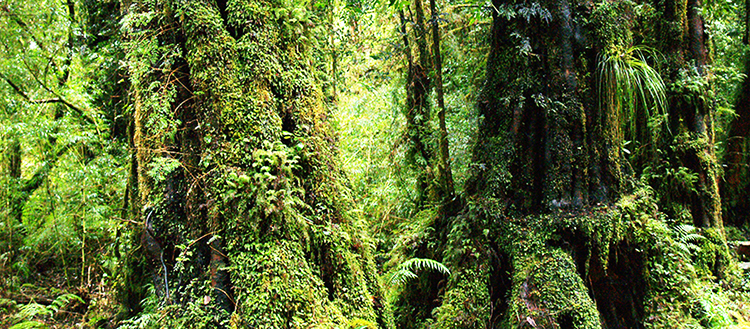Nov 16 2020
Under the guidance of the University of Geneva (UNIGE), an international research team has analyzed which types of forests, with regards to biodiversity, are the most efficient in storing carbon.
 Species diversity allows great carbon storage only in equatorial and tropical rain forests, such as northern Chilean Patagonia Forest illustrated here. Image Credit: UNIGE/Madrigal-Gonzalez.
Species diversity allows great carbon storage only in equatorial and tropical rain forests, such as northern Chilean Patagonia Forest illustrated here. Image Credit: UNIGE/Madrigal-Gonzalez.
Inventory data obtained from natural forests on five continents reveal that the diversity of species is maximum for tropical and equatorial rainforests, and that, by contrast, in forests situated in cold or dry regions, it is the wealth of trees and not their diversity that promotes the CO2 recapture.
The study findings have been published in the Nature Communications journal and are useful in defining natural approaches to fight climate change.
Global warming has caused forests to experience higher mean annual temperatures, longer-lasting droughts, and more often and extreme weather events. Moreover, forests—and the amount of wood they produce—can capture and store carbon dioxide (CO2), playing a vital role in preventing climate change.
Carbon dioxide is eliminated by the forests and trees from the air and converted into carbon at the time of photosynthesis. This is then stored in the form of wood and vegetation, a process known as carbon sequestration. But not all forests have a similar capacity to trap and store carbon.
Opposite Assumptions
In the past few decades, scientists have proposed that species diversity enables denser stacking and niche compartmentalization that increases the abundance of trees inside a forest and that such an abundance enhances the carbon storage capacity of the forest.
However, another theory proposes that it is not diversity that enables tree abundance but the availability of energy substrate. Regions with higher energy content enable more trees to thrive per unit area and increase carbon recapture.
While the scientific community has been questioned by these two hypotheses on the relationship present between abundance and diversity, knowing the solution could viably lead the fight against CO2 emissions.
An international team of researchers, including Jaime Madrigal-Gonzalez, a scientific collaborator at the Institute for Environmental Sciences of the Sciences Faculty of UNIGE, examined which of these hypotheses is more probable under which climatic conditions one is more probable compared to the other. The question was answered with the help of inventory data from natural forests from five continents.
Forests of the Five Continents
Having more species may not always be what is needed to achieve greater carbon storage in forests.
Jaime Madrigal-Gonzalez, Scientific Collaborator, Institute for Environmental Sciences, University of Geneva
Rather, this relation just seems to rule in the planet’s most productive forest regions that are essentially limited to tropical and equatorial rain forests, and certain temperate forests—in regions where deforestation and human-induced forest fires have devastated pristine environments recently.
By contrast, in the forests situated in the driest or coldest regions on Earth, it is apparently the abundance—boosted by productivity—that governs the diversity. In this context, any rise in the number of species will not essentially result in more trees and will not contribute much to carbon storage.
The results of these studies are of considerable practical significance, as they will help decision-makers determine nature-based climate change mitigation plans and to successfully utilize forests and their carbon sequestration to achieve the climate goals explained in the Paris Agreement.
Increasing climatic stress in the most productive forests of the planet could diminish or even collapse the role of diversity against climate change."
Markus Stoffel, Professor, Institute for Environmental Sciences, University of Geneva
Journal Reference:
Madrigal-González, J., et al. (2020) Climate reverses directionality in the richness–abundance relationship across the World’s main forest biomes. Nature Communications. doi.org/10.1038/s41467-020-19460-y.